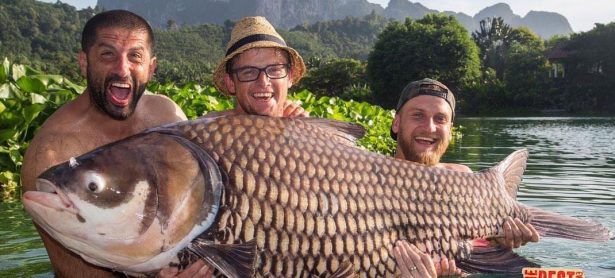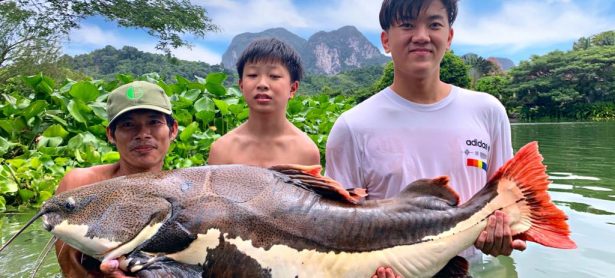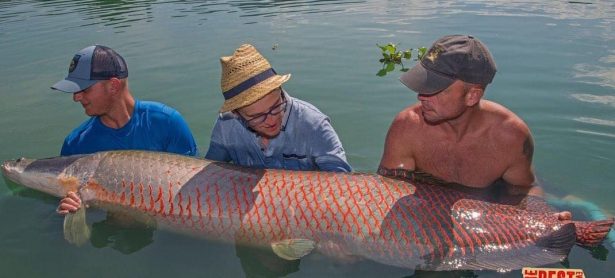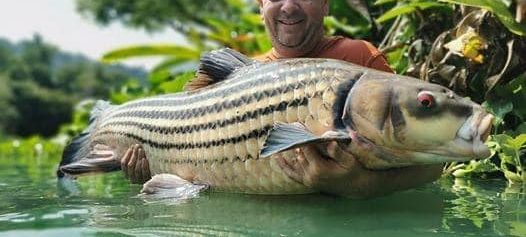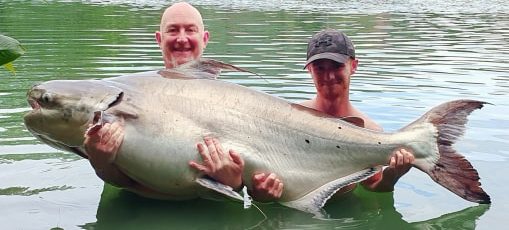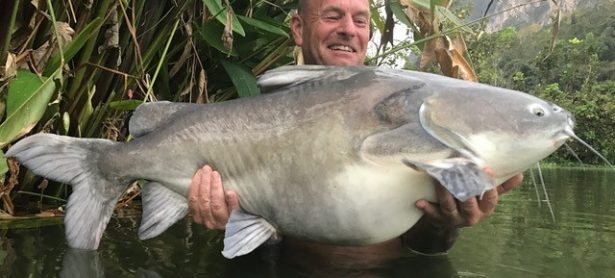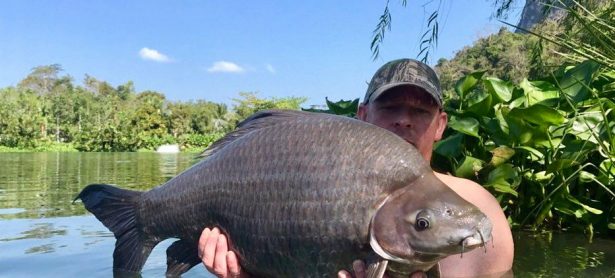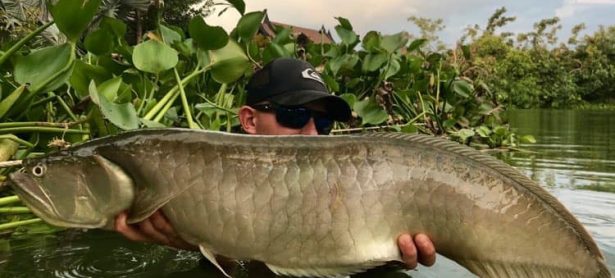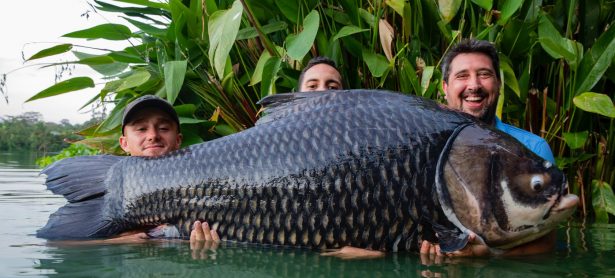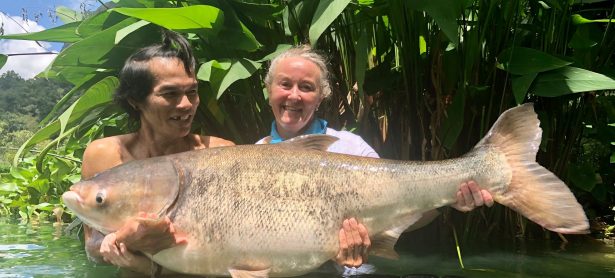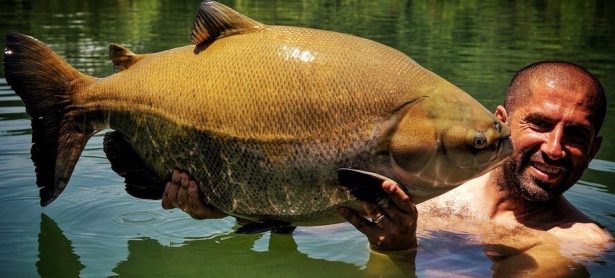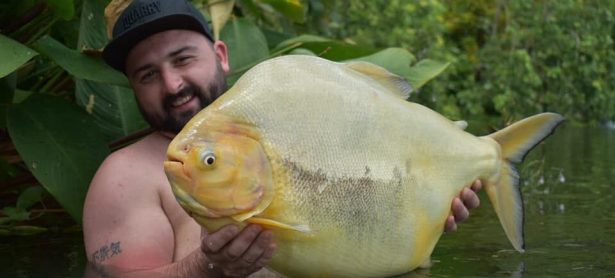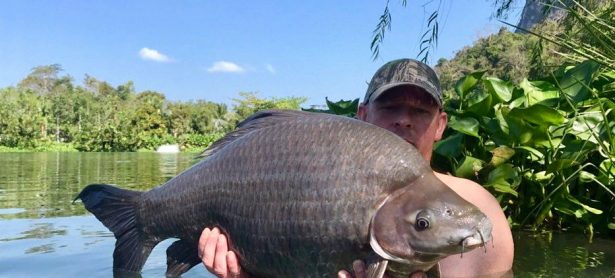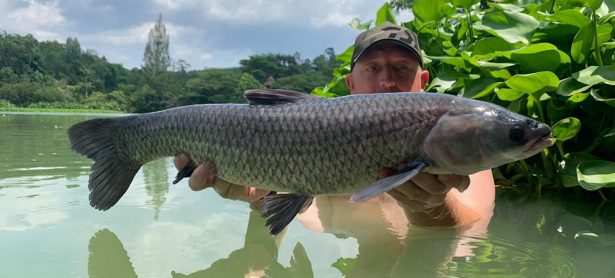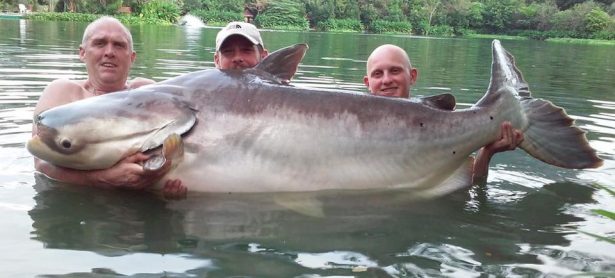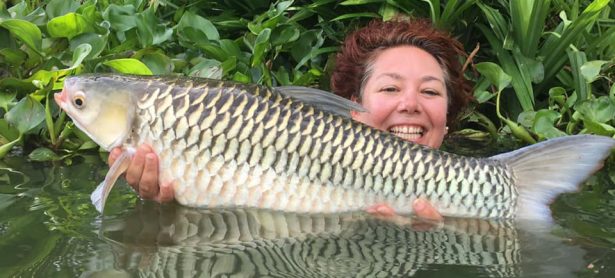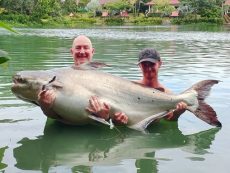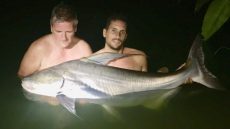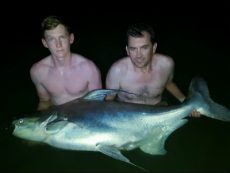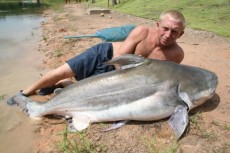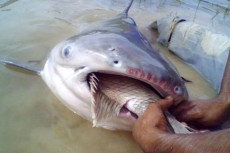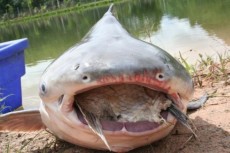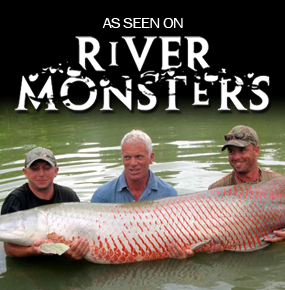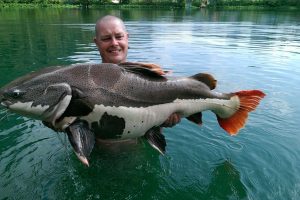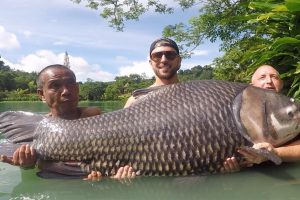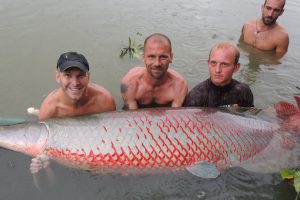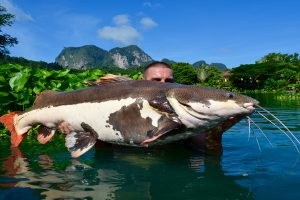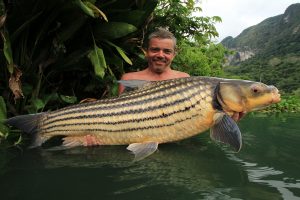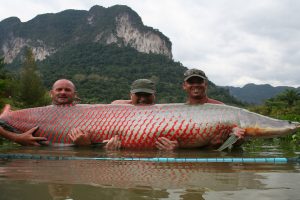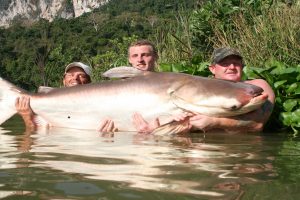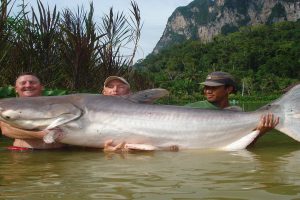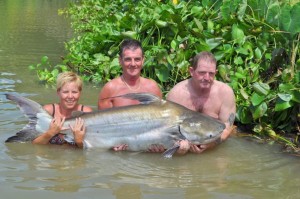 Name: Chao Phraya catfish.
Name: Chao Phraya catfish.
Species: Pangasius sanitwongsei.
Thai name: Pla tepa.
Biggest known fish: 170lb
Lake rod caught record: 170lb
Max length in excess: 3m.
Max weight: 200kg.
IGFA record: 63kg (139lbs)
Diet: Fish, animals and birds.
To fish for our Chao Phraya catfish we use dead fish baits, and whole squid can be productive. They can also be targeted with fly fishing tactics. They are a very hardy and aggressive shoal fish; they hunt in packs and will push other fish out of an area. They particularly hate our alligator gar and have killed several. By far the most successful way to catch these shark catfish is to take one of our Thai guides and go fish spotting. If you creep around the ends of the lake you will see their dark shapes just under the surface in groups, and they are also easy to spot by their bow waving into the shoals of small fish.
Try casting a float fished dead bait to them. These catfish fight as hard if not harder than the Mekong catfish, and they go on long hard runs that will test you and your tackle to the limit. Always be ready for last minute bursts of energy, as even when you think they are beaten they will surprise you.
General facts on Chao Phraya catfish:
The Chao Phraya catfish is in the shark catfish family. They are native to the Mekong river basin and Chao Phraya river basin in Thailand. In terms of size and weight, they are second only to the giant Mekong catfish. They are a beautiful silver colour, the upper body being darker than the belly. They are easy to distinguish from the Mekong catfish by their long flowing fins, which are rumoured by locals to give out electric shocks, but we have handled many of these fish and never experienced this myth.
In Loei, on the upper part of the Mekong, a local fisherman reported a fish weighing 300kg, indicating that the species may, in fact, rival the size of the “real” Mekong giant. Fins are pigmented with dusky melanophores, and the first soft ray in dorsal, pectoral and pelvic fins is prolonged into a filament. It has a broad head and black tips on first few anal fin rays in individuals of all sizes, particularly in juveniles, and the palatine and vomerine teeth are united into a single, long crescentic patch. These catfish are carnivores that feed on small fish, shrimps and carcasses of large animals, and they will hunt as well as scavenge. Larger individuals have been known to feed on carcasses of fowl or dog (which are commonly used for bait in the rivers of Thailand).
We actually lost a 100lb-plus fish which choked to death on a 12lb gourami (see pictures below). They spawn just before the rainy season in May, but they do not spawn naturally in still water, needing flowing water to spawn in the wild. They are stripped and artificially spawned in fish farms throughout Thailand. The young of the year reach a length of about 10cm by mid-June. These are quick growing fish that soon reach maturity and very large weights. These fish can be found in large rivers or lakes, and they are widely spread throughout Asia.



